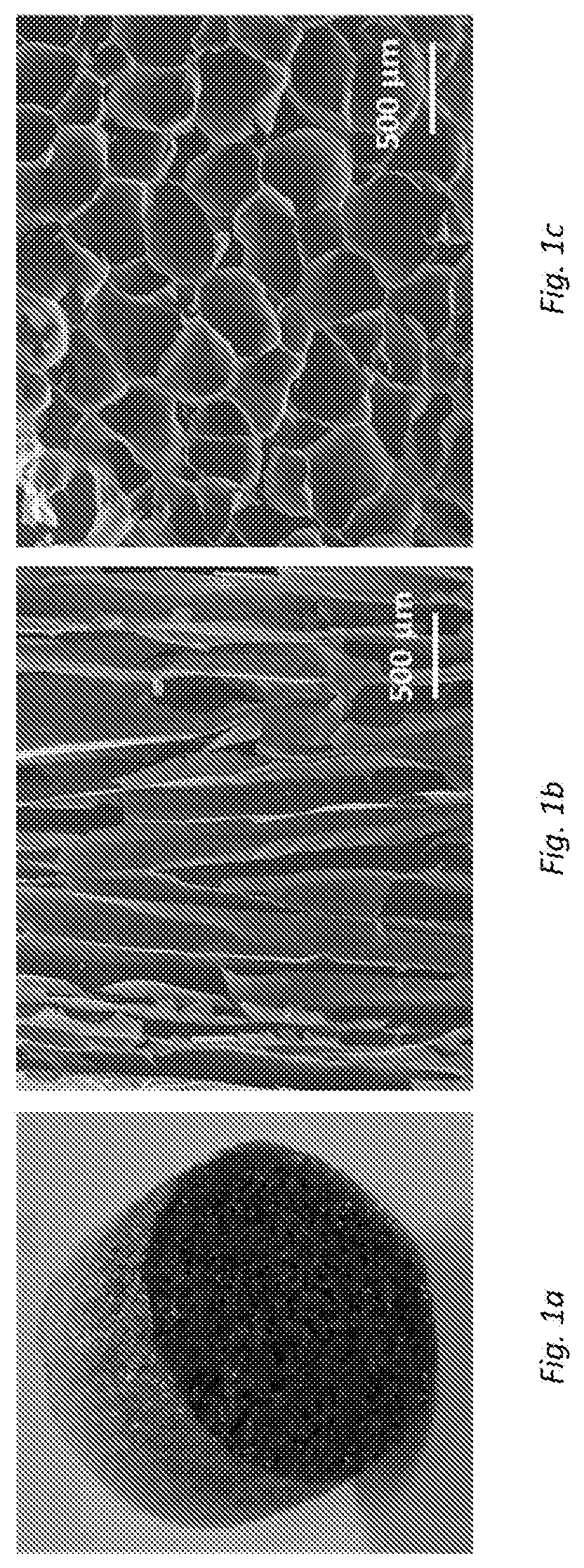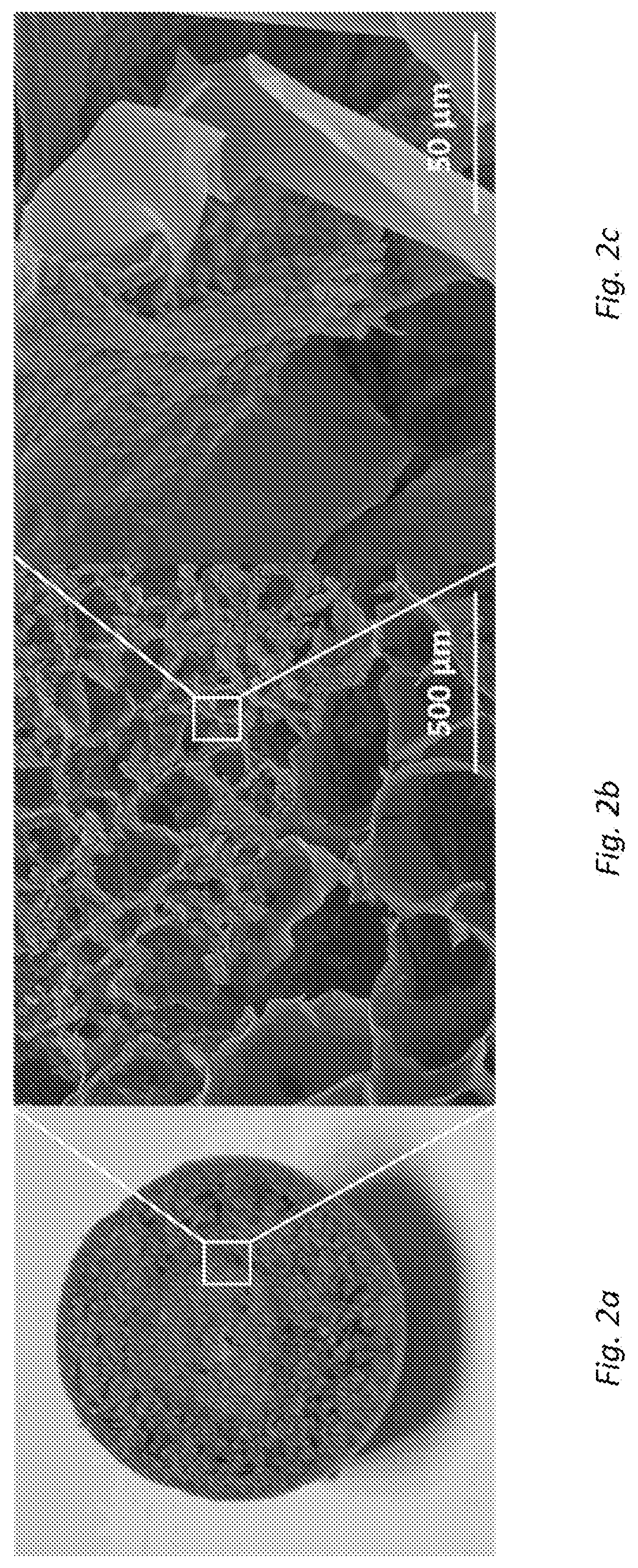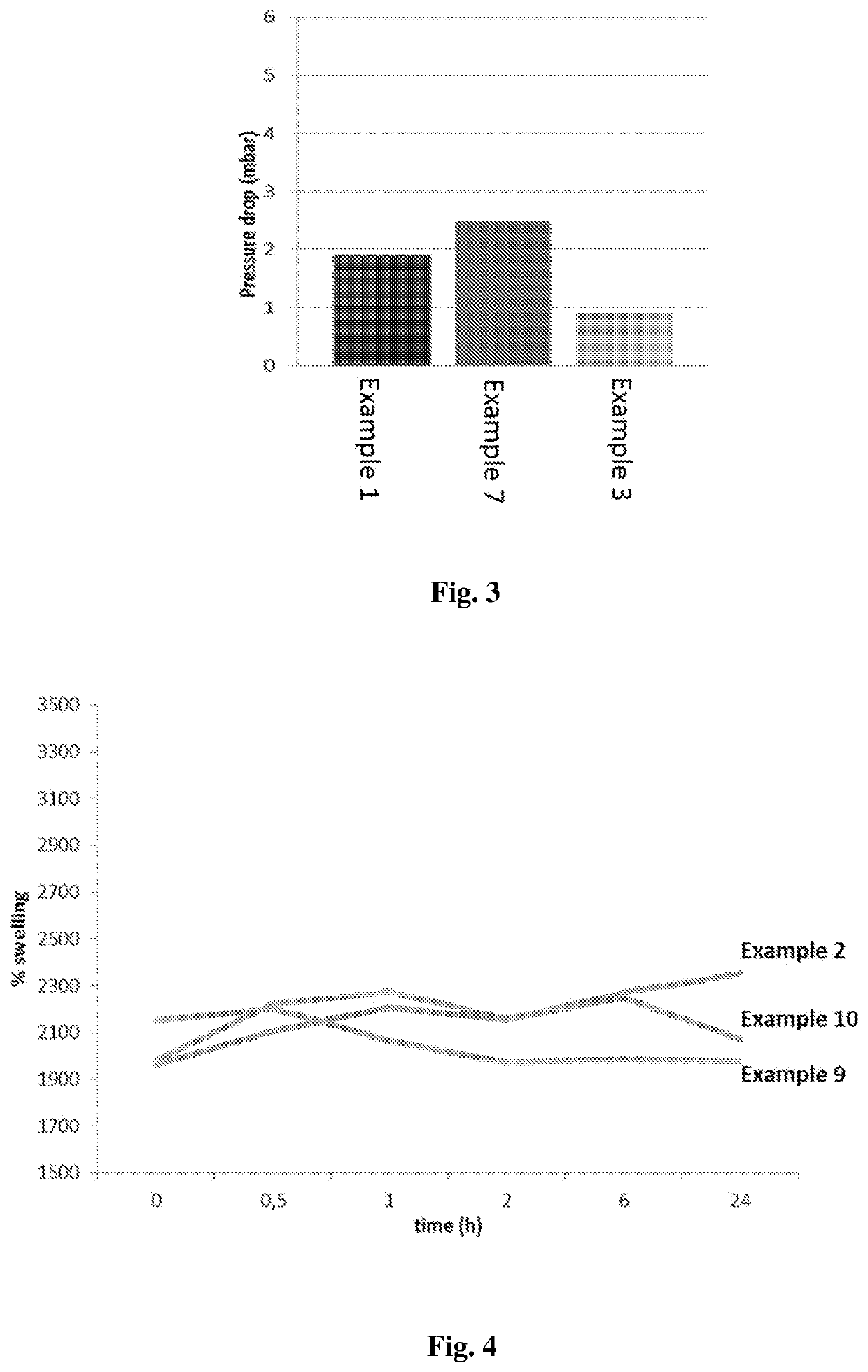Filter for the exchange of heat and moisture for application in the medical field and procedure for the production thereof
a technology of heat and moisture exchange and filters, applied in the direction of respirators, etc., can solve the problems of difficult encounter, high cost, and high cost of filters of this typ
- Summary
- Abstract
- Description
- Claims
- Application Information
AI Technical Summary
Benefits of technology
Problems solved by technology
Method used
Image
Examples
example 1
[0123]This example refers to the synthesis procedure of HME devices based on gelatin and chitosan chemically crosslinked with genipin.
[0124]Reactants:
[0125]Quantities for obtaining 8 cylindrical gelatin-chitosan filters 35 mm in height and 50 mm in diameter:[0126]gelatin solution: 10 g of gelatin (Italgelatine—bloom: 280, mesh: 4) dissolved in 391.4 mL of water under constant magnetic stirring at 40° C. for 1 h.[0127]chitosan solution: 5 g of chitosan (Sigma Aldrich, low molecular weight) dispersed in 334.9 g of water under vigorous stirring; when the dispersion was homogeneous, 3.4 g of acetic acid (Sigma Aldrich, purity ≥99%) were added to achieve complete dissolution by magnetic stirring and ultrasound (1 h).[0128]genipin solution: 0.3 g of genipin (Wako chemicals) were dissolved in 30 g of water in an ultrasonic bath (30 min).
[0129]Procedure:
[0130]290 mL of the chitosan solution were poured into the gelatin solution at room temperature and a slow magnetic stirring was maintained...
example 2
[0139]This example refers to the synthesis procedure of HME devices based on gelatin and chitosan cross-linked by dehydrotermal treatment (DHT).
[0140]The gelatin and chitosan solutions were prepared as described in Example 1, with the difference that after mixing the two solutions the crosslinker solution was not added, but only 28.6 g of water; the gelatin and chitosan solutions were used in quantities and ratios identical to those of Example 1.
[0141]Procedure:
[0142]The chitosan solution was poured into the gelatin solution at room temperature and the resulting solution was kept under slow magnetic stirring to avoid foaming until complete homogenization of the system (30 min).
[0143]The obtained solution was poured into the molds and left to rest until hydrogel achievement, after about 3 hours as visually verified (step d).
[0144]The freeze-drying (step e) was carried out following the same thermal profile of Example 1. On the samples so freeze-dried, the DHT cross-linking step (step...
example 3
[0146]This example refers to the synthesis procedure of a HME device based on gelatin and chitosan chemically crosslinked with genipin following the procedure of Example 1 and varying the gelatin:chitosan ratio which, in this case, is equal to 50:50. Example 1 was repeated by changing only the amounts and concentrations of chitosan and genipin solutions as described below:[0147]chitosan solution: 10 g of chitosan (Sigma Aldrich, low molecular weight) dispersed in 574.2 g of water under vigorous stirring; when the dispersion resulted homogeneous, 5.8 g of acetic acid (Sigma Aldrich, purity 99%) were added to achieve complete dissolution by magnetic stirring and ultrasound (1 h); a volume of chitosan solution equal to 580 mL was obtained;[0148]genipin solution: 0.4 g of genipin (Wako Chemicals) were dissolved in 40 g of water in an ultrasonic bath (30 min), obtaining a total solution volume of 40 mL.
PUM
| Property | Measurement | Unit |
|---|---|---|
| temperature | aaaaa | aaaaa |
| temperature | aaaaa | aaaaa |
| thermal conductivity | aaaaa | aaaaa |
Abstract
Description
Claims
Application Information
 Login to View More
Login to View More - R&D
- Intellectual Property
- Life Sciences
- Materials
- Tech Scout
- Unparalleled Data Quality
- Higher Quality Content
- 60% Fewer Hallucinations
Browse by: Latest US Patents, China's latest patents, Technical Efficacy Thesaurus, Application Domain, Technology Topic, Popular Technical Reports.
© 2025 PatSnap. All rights reserved.Legal|Privacy policy|Modern Slavery Act Transparency Statement|Sitemap|About US| Contact US: help@patsnap.com



